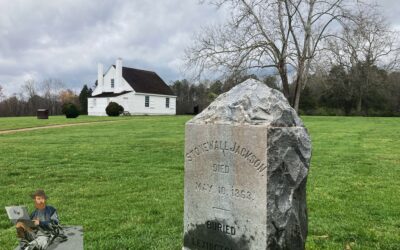Voting for President during the Civil War
In November 1864 Abraham Lincoln was running for reelection against his former top Civil War general, the Democratic candidate, George B. McClellan. Interestingly, since the 1864 election occurred during the Civil War, only Northern states participated in the election. The electoral votes were much different then but Pennsylvania lead the way with 26 electoral votes followed by Ohio with 21. The election was held on November 8 and Lincoln won by over 400,000 popular votes and easily secured the necessary votes in the electoral college by a margin of 212 to 21. Even though the North had victories at Gettysburg and Vicksburg, Lincoln was worried about his reelection because no President had won a second term in office since Jackson in 1832. Lincoln was being criticized for how he was handling the war and some of his political decisions at the time. However, the tides changed as the Democrat Pary began to split and in September, General Sherman marched into Atlanta. This allowed Lincoln and the Republicans to secure the White House and Congress.
I have blogged about Civil War Era Elections and the Elections of 1860 and 1864 in the past but this time I wanted to share something a little different. A question came to mind for me recently, how did Civil War soldiers vote? After doing some research, I learned that several states allowed soldiers in the field to cast ballots. This was the first time this happened in United States history and over 70% of the soldiers in the Army voted for Lincoln.
According to an article by the Smithsonian Institute, “Each state also had to figure out how the men at the front would submit their votes. Mailing proxy votes, ballots or tally sheets was part of the 1864 absentee voting procedures for Connecticut, New York, Ohio, Pennsylvania, and West Virginia. Soldiers and sailors voted in camps and hospitals under onsite inspection by appointed clerks or state officials. For instance, Pennsylvania officials prepared mailing materials for conveying the votes gathered at the front. State official David McKelvy listed “Poll Books and tally lists, copies of laws, detachments, envelopes and 960 12 cent P.O. stamps and 320 3 cent P.O. stamps” in the account of his trip to oversee voting in the field”
The article goes on to state, “Ohio produced envelopes for both the state and national elections. Much like the envelope for the October 1864 state election, the upper left corner of the envelope was marked “presidential election” for use with the national ballot in November. The covers could be carried by the post office or by an express company. The war ballots for this state election included seats for congressional representatives and the secretary of state. The absentee vote in this election made up nine percent of the vote (Beaton p. 77). In the presidential election, Ohio’s qualified military absentee voters (white men over the age of 21) cast 12 percent of all ballots (Beaton p. 78). The majority of military and civilian Ohioans voted for the re-election of President Lincoln.”
Check out this sketch by William Waud of Pennsylvania soldiers voting in the field. The sketch is from the October 29, 1864 edition of Harper’s Weekly




0 Comments